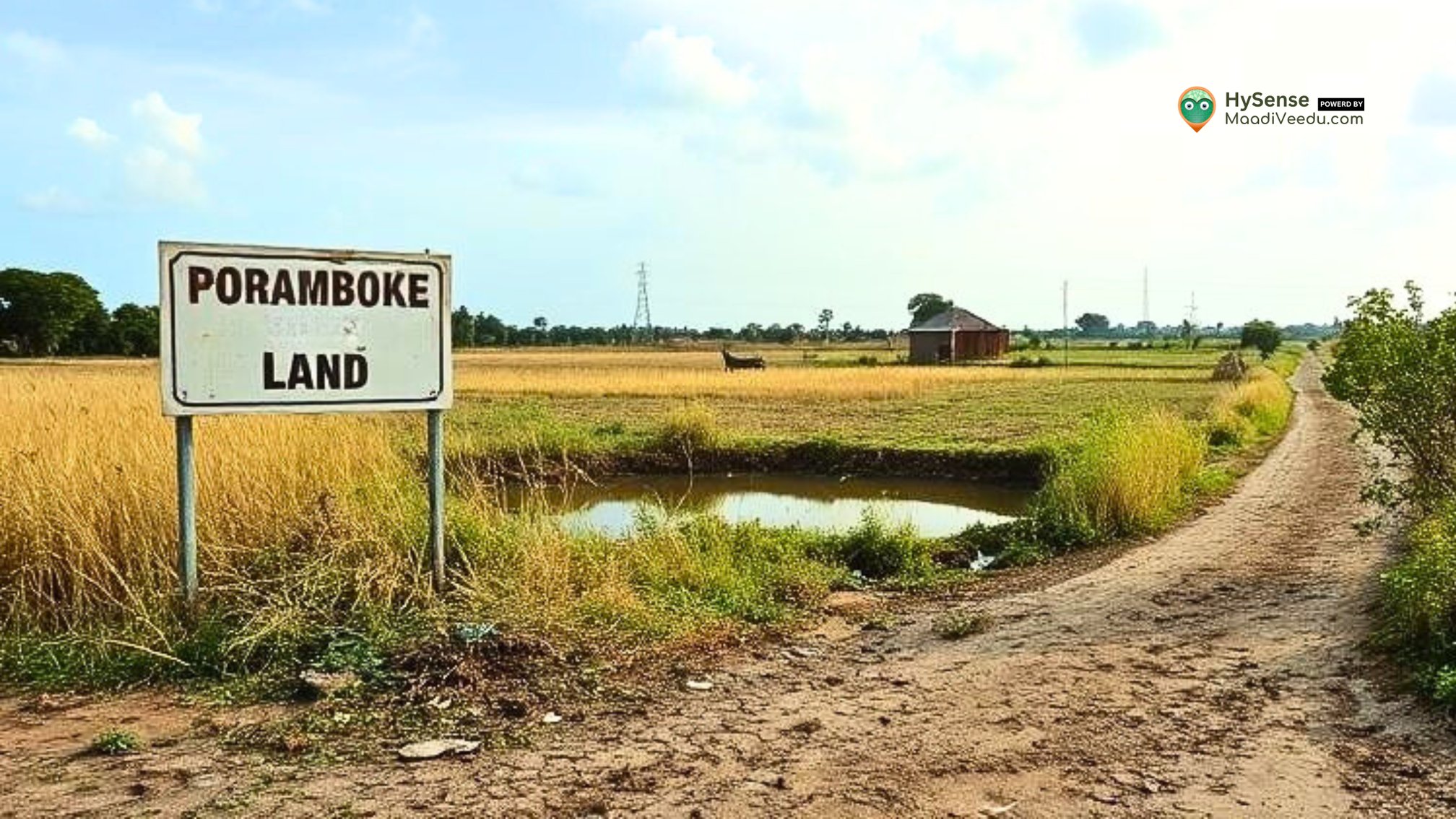Borewell Process: 7 Key Types and Smart Drilling Tips
Need reliable water? Explore our guide on borewells, drilling techniques, and sustainable practices to ensure fresh water for your home and farm, year after year.

Table of Contents
In many parts of the country, especially in rural and semi-urban areas, water scarcity is a growing challenge. Borewells have become an essential solution to access underground water. These wells tap into aquifers – underground layers where water is stored in rock, sand, or gravel – and bring this water to the surface for farming, drinking, and other daily uses.
Looking for land or properties with reliable water sources? Explore a wide range of listings perfect for farming, residential, or commercial use, all carefully verified for your peace of mind.
This blog covers the entire borewell process, the seven main types of borewells, smart drilling tips, and how to use water sustainably. Whether you're planning a borewell for your farm or household, this guide will help you understand the process and make informed decisions.
Understanding the Borewell Principle
A borewell works by drilling deep into the earth until it reaches water-bearing layers called aquifers. The key to a successful borewell is understanding the water table — the level below the surface where the soil is fully saturated with water.
- Water Table Variations: The water table changes with seasons — it rises during monsoons and falls during dry months. Proper study helps avoid drilling too deep or shallow, preventing water shortage or dry wells.
- Recharge: Aquifers recharge slowly through rainfall and surface water infiltration. Over-extraction without recharge causes long-term water scarcity.
How Borewells Work: The Mechanics of Groundwater Extraction
Once drilled, a casing pipe is inserted to prevent borewell walls from collapsing and keep dirt out. A submersible pump is then installed to push water from the aquifer to the surface.
- The pump’s power and the borewell’s depth influence the water flow.
- Proper casing and pump selection ensure efficient water extraction without damaging the borewell.
Types of Borewells: 7 Key Varieties
1. Dug Wells
These are shallow wells dug manually or by machine and lined with bricks or stones to prevent collapse. They depend mainly on surface water and are common in areas where the water table is near the surface. Dug wells are low-cost but can dry up during summer.
2. Driven Wells
Driven wells use a pipe hammered into soft soil to access shallow groundwater. They are quick and affordable but work only in loose, sandy soils. These wells suit smaller water needs like domestic use.
3. Drilled Wells
The most common type, drilled wells use rotary drilling machines to reach deep aquifers. They provide a reliable, year-round water supply and can reach depths of hundreds of feet. These wells are ideal for irrigation and large domestic needs.
4. Jetted Wells
Jetted wells use high-pressure water jets to create holes in soft soils. This method is cost-effective but limited to shallow depths. It’s fast and suitable for sandy or loose soil conditions.
5. Environmental Borewells
Used mainly for groundwater monitoring, these borewells track water quality and contamination levels. They are important near industrial zones or polluted areas to study environmental impact.
6. Monitoring Borewells
Installed to regularly check groundwater levels and quality, these wells help manage water extraction for large-scale irrigation or industry to avoid overuse.
7. Solar-powered Borewells
Using solar panels to power pumps, these wells are ideal where electricity is unreliable. They reduce running costs and support eco-friendly water access, especially in remote villages.
Borewell Drilling Process: Step-by-Step
1. Site Selection
A hydrogeological survey identifies the best drilling location by studying soil types, water table depth, and groundwater quality.
2. Soil and Rock Analysis
Understanding soil and rock helps select the right drilling equipment and method.
3. Drilling
The drilling machine bores into the ground to reach the aquifer. The method varies with soil conditions.
4. Installing the Casing
A steel or PVC pipe is inserted into the borehole to keep walls intact and water clean.
5. Installing the Pump
A submersible pump is lowered into the borewell to draw water.
6. Testing the Borewell
Water flow and quality tests ensure the borewell meets the required standards.
Choosing the Right Submersible Pump
- Pump capacity depends on borewell depth and water needs.
- Energy efficiency saves electricity costs.
- Durability ensures long life in underground conditions.
- Avoid undersized pumps that deliver low water or oversized pumps that waste power.
Aquifers and Borewells: What You Need to Know
- Confined aquifers have water trapped between layers of impermeable rock and usually offer better water quality.
- Unconfined aquifers are closer to the surface and more vulnerable to contamination.
- Knowing recharge rates helps prevent over-extraction.
Borewell Casing and Screening: Best Practices
- Use strong casing pipes like PVC or steel to avoid collapse.
- Install screens or filters at the water-bearing zone to prevent sand and debris from entering.
- Proper installation increases borewell lifespan and maintains water quality.
Water Table and Borewell Depth
- Measure local water table before drilling.
- Consider seasonal changes to avoid drilling too shallow or unnecessarily deep.
- A well-planned depth reduces costs and improves water availability.
Sustainable Borewell Practices
- Avoid over-extraction to prevent groundwater depletion.
- Use energy-efficient pumps and renewable energy sources like solar.
- Harvest rainwater to recharge aquifers naturally.
- Regularly monitor water levels and quality.
Smart Drilling Tips: Boost Efficiency and Lifespan
1. Conduct Detailed Site Surveys
A thorough survey reduces drilling risks and helps choose the right equipment.
2. Choose Proper Drilling Equipment
Match equipment with soil and rock types for smooth drilling.
3. Regular Maintenance
Clean pumps, check casing, and monitor water quality frequently.
4. Monitor Water Levels
Prevent overuse and keep aquifers healthy.
Frequently Asked Questions (FAQs)
1: How deep should a borewell be drilled?
The depth depends on the local water table, which varies by region and season. A hydrogeological survey can provide precise depth recommendations, usually ranging from 50 to over 300 feet.
2: What is the average cost of drilling a borewell?
Costs vary depending on depth, soil type, and location but typically range from ₹50,000 to ₹2,00,000 or more. Using local contractors and equipment suitable for soil conditions can help reduce costs.
3: How long does a borewell last?
With proper casing, screening, and maintenance, a borewell can last 15-20 years or more. Regular checks prevent damage and maintain water flow.
4: Can borewell water be used for drinking?
Yes, but it is important to test the water quality regularly for contaminants like fluoride, arsenic, and bacteria. Using filters or water treatment methods is advised if contamination is detected.
5: What causes borewell failure?
Common reasons include drilling in dry zones, poor casing installation, over-extraction leading to lowered water tables, and contamination from surface activities.
6: How can I make my borewell sustainable?
Monitor water levels, avoid excessive pumping, use energy-efficient or solar pumps, and supplement with rainwater harvesting to recharge groundwater.
7: Is solar-powered borewell pumping effective?
Yes, solar pumps save electricity costs and work well in sunny regions. Initial setup costs are higher, but long-term savings and sustainability benefits are significant.
Conclusion
Borewells remain a vital solution for water access, especially where surface water is scarce. Understanding the different borewell types, drilling process, and maintenance helps you make smart choices that benefit your home, farm, and environment. Sustainability should always guide borewell use, ensuring water availability for future generations.
For more insights and updates on water solutions and sustainable practices, keep following us!










